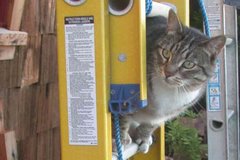2016.11.19
Sunset
Here is one of the last sunsets of our voyage. What a wonderful voyage this has been.
I have not had as much time to post educational material about the cruise. I will try to write up some posts after I get back to the states to document the methods that we used on the cruise.
Today was a particularly exciting day. My day started with Drs. Jamie Howarth and Phil Barnes (chief scientist). As we started the shift, we got to see a multi-core that had just come aboard the ship. We also got to see a multi-core that had been collected prior to our arrival. Later we saw more MCs.
MCs are particularly revealing because the multi-corer rig is lowered to the sea floor and the cores gently fall into the sediment. An arm then moves into place beneath the core ends and traps the sediment in the core. If all works right, there is a little bit of water above the sediment so that we can collect and observe the sediment water interface. If this happens, we know that we are being able to observe all the sediment that was deposited (and not eroded) in the recent past. I also include a photo of the multi-corer.
In one channel core, we observed a deposit that we interpreted to be a turbidite that was silty sand at the base and fined upwards into a sandy silt. This turbidite was on top of some olive gray very fine sandy silt (the ubiquitous facies of hemipelagic sediment in our cores). Several dm below the turbidite was a second thinner muddy turbidite that we had also seen in other cores at this shallow stratigraphic depth. To note was that there was no oxidized sediment under the sandy turbidite.
In another MC, we found some muddy sediment overlying an oxidized layer of sediment. This ox layer has been observed in other MCs that were further from the earthquake. These ox layers are typically at the surface, unless something rapidly buries them.
Both of these cores appear to have a really young turbidite, possibly deposited "yesterday."
We will continue to collect more cores in an attempt to narrow down some details about this deposit and to increase the number of observations of this deposit.
Needless to say, we have more to say, but we will keep that to ourselves until we have more data and have submitted a paper draft to a journal (in the coming month or so). Today was most exciting and the science crew is very enthused at what we are observing while here on the R/V Tangaroa. This, plus the great views of the sunset as seen in the above photo.
Saturday, November 19, 2016
Subscribe to:
Post Comments (Atom)




No comments:
Post a Comment